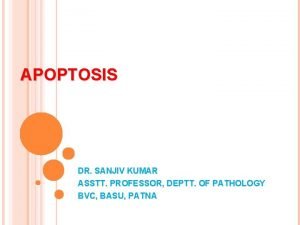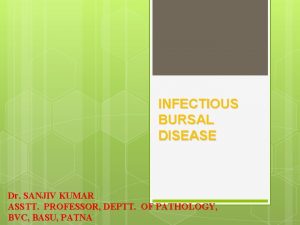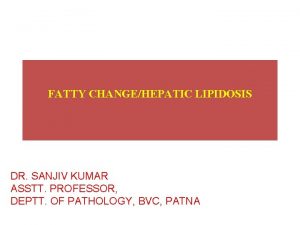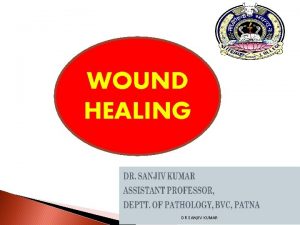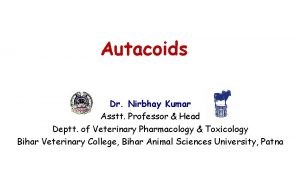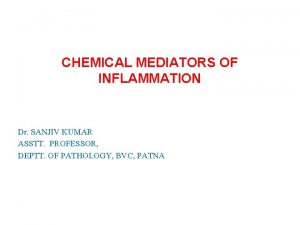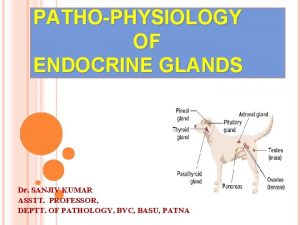PHOTOSENSITIZATION DR SANJIV KUMAR ASSTT PROFESSOR DEPTT OF








- Slides: 8

PHOTOSENSITIZATION DR. SANJIV KUMAR ASSTT. PROFESSOR, DEPTT. OF PATHOLOGY, BVC, PATNA

INTRODUCTION • Is activation of photodynamic chemicals on the skin by long wave length UV or occasionally by visible light. • Necrosis and edema are produced in the exposed areas of skin of animals. • The cellular damage by photosensitization is due to release of reactive oxygen species leading to mast cell degranulation and production of chemical mediators of inflammation.

Factors necessary for photosensitization in animals • Oxygen • Sunlight • Photodynamic chemicals • Skin devoid of hair or wool and lacking pigments

Types of photosensitization • Type I: Primary photosensitization • Type II: Abnormal porphyrin metabolism associated photosensitization • Type III: Hepatogenous photosensitization

Type I: Primary Photosensitization • Causes – Plants containing helianthrones (e. g. hypericine in Hypericum perforatum; fagopyrin in Fagopyrum esculentum) and furocoumarin pigments (e. g. Cymopterus watsoniiand Ammi majus), tetracyclines and sulphonamides • Examples – Phytotoxins from furocoumarin plants exposed to fungi or other injury may be absorbed into skin which reacts with UV light – Phenothiazine is converted into photoreactive compound when bypasses the liver, reaches the skin causing photodermatitis on exposure to sunlight

Type II: Abnormal porphyrin metabolism associated photosensitization • Due to inherited enzyme deficiency, abnormal porphyrin photodynamic metabolic products like uroporphyrin and protoporphyrin accumulate in blood and tissues. • The uroporphyrin also causes discolouration of bone known as “osteohaemochromatosis” and teeth called “pink teeth”. • Examples – Bovine congenital porphyria – Bovine haematopoetic protoporphyria

Type III: Hepatogenous photosensitization • Hepatogenous photosensitization is caused by impaired hepatic capacity to excrete phylloerythrin derived from chlorophyll degradation in the alimentary tract, mainly affecting herbivores. • Causes – Hepatocellular damage or injury (Toxic hepatitis due to Lantana camara, Tribulus terrestris, plants producing pyrrolizidine alkaloids, sporidesmins) – Inherited hepatic defects – Biliary obstruction – Infection: Leptospirosis – Chemicals: CCl 4 poisoning

• Gross pathology, hairless, non-pigmented skin exposed to sun light shows erythema, edema, blisters, exudation, necrosis and sloughing of necrotic tissue. • Histopathology, coagulative necrosis of epidermis, subepidermal vesiculation, swelling of endothelial cells, fibrinoid degeneration and thrombosis of blood vessels leading to edema. • Secondary bacterial infection culminate in sloughing of epidermis and adnexae.









